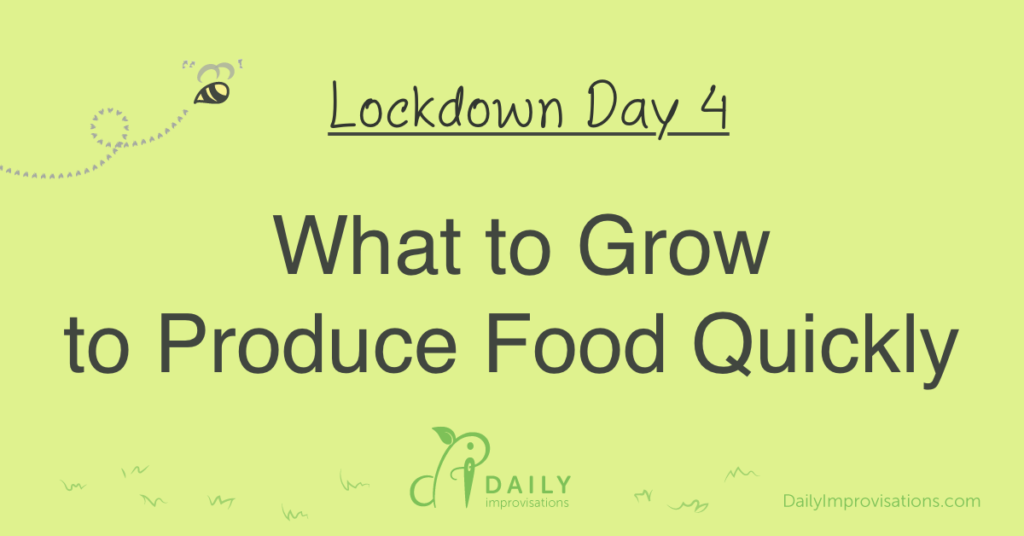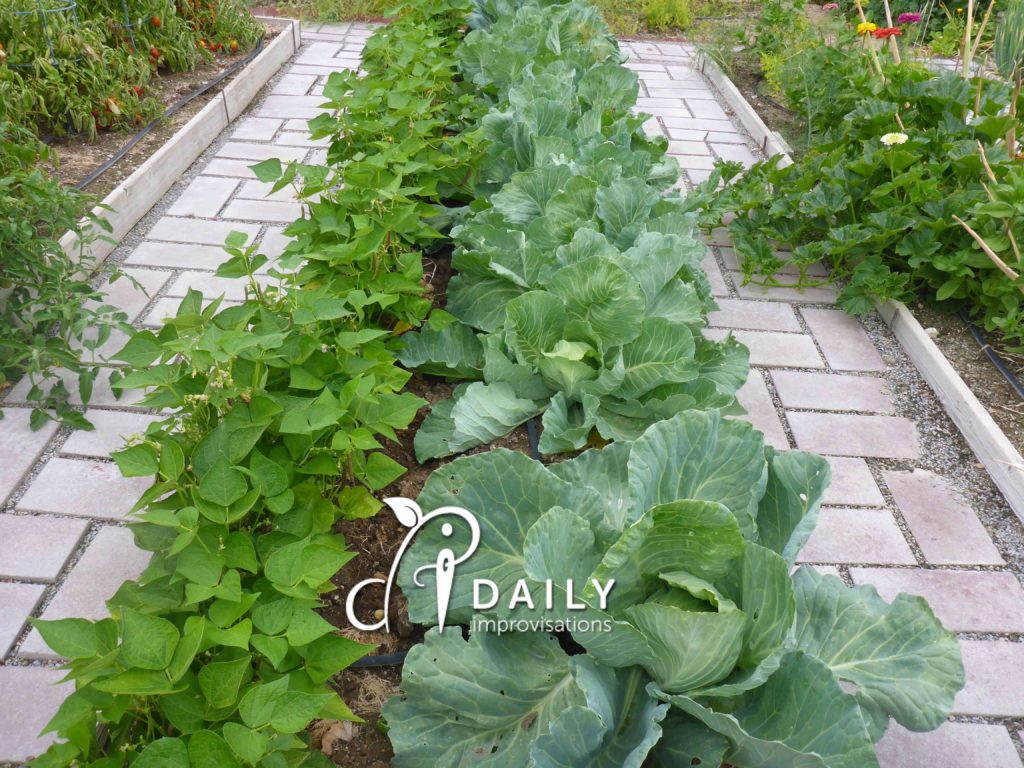This title sounds panicky, but it is really just to answer a direct question asked of me. Besides, isn’t it something most gardeners ask every spring? So, here are some things to think about for growing garden vegetables for the near future.

What part of the plant are you eating?
In the life cycle of a plant, mature leaves come first. Thus, any plant where the leaves are the desired edible part will be available for food sooner than plants where you have to wait for the fruit of the plant.
Plants that fall into this category are
- lettuce
- spinach
- cabbage
- beet greens
It is also possible to cut some leafy crops so that the plant keeps on growing for further harvest. This depends on the growth habits, so does not usually work for cabbage.
The trouble with harvesting roots
Roots may be forming all along, but they typically need more time than leaves to harvest anything of decent size. True, you can eat small potatoes, but it is a lot of work to find them and it disturbs the growing plant significantly to get them.
Radishes are one root crop that grows extremely fast. Some people really like them fresh. I’m pretty sure I couldn’t survive on radishes, but maybe there are some creative ways to prepare them that I haven’t tried. Raw radishes are hard on my digestive system.
Some root crops will overwinter enough to start growing again as soon as spring weather allows. This is one reason I gave up rotating where my potatoes are planted. Unfortunately, once the plant is growing again, some roots are not in a good stage for eating. Onions can be soft or full of green layers. Potato tubers may be green, which gives them an unpleasant taste and they may upset your stomach.
Understanding days to maturity
Cabbage is a good example of a type of plant with a wide range of days to maturity, depending on the variety. You can plant seed for cabbages that will take until the fall to be full size. Other cabbages will mature in a month and a half.
Early maturity usually also means smaller. If you plant an early cabbage, but are waiting for it to grow the size of what you are used to seeing in the grocery store, you will be disappointed. In fact, you will probably just watch it crack and become less edible. Yes, I have done this.
How soon can you pick the fruit of the vine?
There are, however, many vegetables that can be harvested at baby stage. Carrots, peas, zucchini, and beans can be eaten as basically any size. Carrots obviously can’t keep growing after harvest, but peas, beans, and zucchini plants will keep producing.
How long they will keep producing is a matter of both type of plant and climate. Some plant types are what is called determinate, meaning they have a timed life span regardless of the weather. For instance, there are determinate and indeterminate tomatoes.
Determinate varieties often produce comparatively sooner than indeterminate varieties, but the plant may die or stop producing after its internal clock tells it to.
Seasonal climate
How long a plant will keep producing will also depend on the weather trends, or what can be called seasonal climate. You may be able to keep picking peas all spring, but once the heat hits, the vines usually shrivel and die.
Many lettuce varieties will bolt with heat, which means they see that as a sign to put all their energy into producing seed. The leaves become dense and bitter.
Variations in the seasonal climate will also affect when direct seeded crops will sprout. A dry, cool spring will be hard on lettuce sprouts. A hot, wet early summer will make it challenging to get squash seeds to sprout.
Do transplants give earlier crops?
Transplants might give you earlier crops, but here are some things to consider:
- Transplanting sets back plant growth about 2 weeks.
- It helps a transplant if blossoms are kept picked up through the 2 week adjustment time period.
- The weather has a large impact on plant growth, so direct seeded plants will often produce just as fast as transplants.
- Transplants are often stressed or stunted by living in pots too long or ill-tended.
- Stress tends to clue plants to go into the seed producing cycle early, which means the overall growth will be stunted.
- Plants are affected by touching other plants, so if transplants still in pots are left too close to each other, their growth will be altered.
- Using cold frames or row covers to keep plants warmer takes diligence if you don’t want to accidentally cook them one warm spring day.
As I wrote in Quarantine Day 3, I start many things from seed, so I’m not trying to discourage seed starting. You just need to know what to do to make the most of it.
If a plant stays relatively small for a few weeks, it is a good choice for early seed starting. Many flowers and peppers fall into this category. Onions and leeks are fairly easy to handle as seedlings in pots because they grow straight up.

Planning for early crops next year
Once you have a garden going, you can doing things to increase your chances of earlier crops next year. Here are some strategies are:
- bulbing or bunching varieties
- winter hardy crops
- cold frames
- self-sowing
I have some bunching onions that are a pain to thin every year, but produce onions all year long. I just picked a cabbage from last year’s crop. I usually let lettuce go to seed because it often sprouts before the weather allows for much planting.
Growing the same crop in the same place can make self-sowing more straightforward, though it depends on how the seeds travel. Lettuce seeds float everywhere, but things like beans and tomatoes tend to come up right under the parent plant. There is only one reason why rotating crops might not be necessary or even helpful for a home garden.
I’ve not done a lot with cold frames because I have had more insect damage to plants growing there than was worth the effort. Maybe it was where I located the cold frame, but it was great habitat for pill bugs which decimated my seedlings. But I know other use them successfully, so I am going to think more about this.
Taking advantage of the weather
It is raining here today and is scheduled to rain for the next 4 days. This is a perfect time to get some seeds in the ground. I will double check my chicken fencing. If it is not raining too hard or the sun comes out for a bit, I will be planting
- peas,
- lettuce,
- spinach,
- beets,
- carrots,
- cabbage,
- broccoli
- radishes
I should be eating something from the garden in just over a month! I will try to plant seeds for the greens every couple of weeks to have a more steady supply. This will also be adjusted to more heat tolerant greens as May rolls around.
Happy spring in spite of quarantine!

Leave a Reply